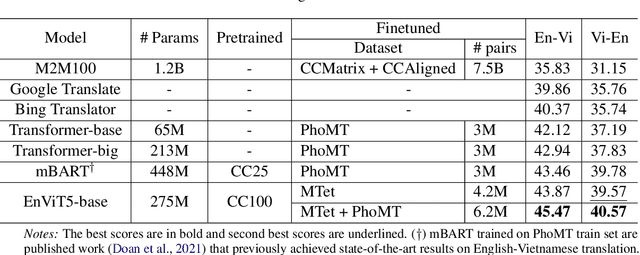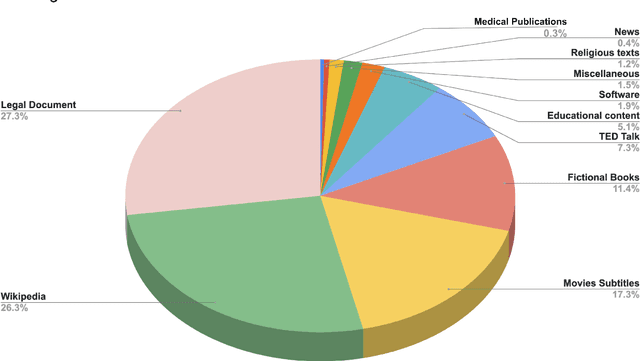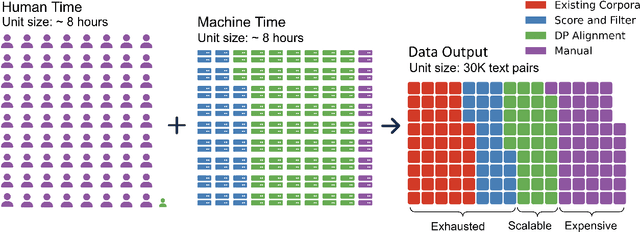Trieu H. Trinh
Gold-medalist Performance in Solving Olympiad Geometry with AlphaGeometry2
Feb 05, 2025Abstract:We present AlphaGeometry2, a significantly improved version of AlphaGeometry introduced in Trinh et al. (2024), which has now surpassed an average gold medalist in solving Olympiad geometry problems. To achieve this, we first extend the original AlphaGeometry language to tackle harder problems involving movements of objects, and problems containing linear equations of angles, ratios, and distances. This, together with other additions, has markedly improved the coverage rate of the AlphaGeometry language on International Math Olympiads (IMO) 2000-2024 geometry problems from 66% to 88%. The search process of AlphaGeometry2 has also been greatly improved through the use of Gemini architecture for better language modeling, and a novel knowledge-sharing mechanism that combines multiple search trees. Together with further enhancements to the symbolic engine and synthetic data generation, we have significantly boosted the overall solving rate of AlphaGeometry2 to 84% for $\textit{all}$ geometry problems over the last 25 years, compared to 54% previously. AlphaGeometry2 was also part of the system that achieved silver-medal standard at IMO 2024 https://dpmd.ai/imo-silver. Last but not least, we report progress towards using AlphaGeometry2 as a part of a fully automated system that reliably solves geometry problems directly from natural language input.
MTet: Multi-domain Translation for English and Vietnamese
Oct 19, 2022



Abstract:We introduce MTet, the largest publicly available parallel corpus for English-Vietnamese translation. MTet consists of 4.2M high-quality training sentence pairs and a multi-domain test set refined by the Vietnamese research community. Combining with previous works on English-Vietnamese translation, we grow the existing parallel dataset to 6.2M sentence pairs. We also release the first pretrained model EnViT5 for English and Vietnamese languages. Combining both resources, our model significantly outperforms previous state-of-the-art results by up to 2 points in translation BLEU score, while being 1.6 times smaller.
Enriching Biomedical Knowledge for Low-resource Language Through Translation
Oct 11, 2022



Abstract:Biomedical data and benchmarks are highly valuable yet very limited in low-resource languages other than English such as Vietnamese. In this paper, we make use of a state-of-the-art translation model in English-Vietnamese to translate and produce both pretrained as well as supervised data in the biomedical domains. Thanks to such large-scale translation, we introduce ViPubmedT5, a pretrained Encoder-Decoder Transformer model trained on 20 million translated abstracts from the high-quality public PubMed corpus. ViPubMedT5 demonstrates state-of-the-art results on two different biomedical benchmarks in summarization and acronym disambiguation. Further, we release ViMedNLI - a new NLP task in Vietnamese translated from MedNLI using the recently public En-vi translation model and carefully refined by human experts, with evaluations of existing methods against ViPubmedT5.
ViT5: Pretrained Text-to-Text Transformer for Vietnamese Language Generation
May 13, 2022



Abstract:We present ViT5, a pretrained Transformer-based encoder-decoder model for the Vietnamese language. With T5-style self-supervised pretraining, ViT5 is trained on a large corpus of high-quality and diverse Vietnamese texts. We benchmark ViT5 on two downstream text generation tasks, Abstractive Text Summarization and Named Entity Recognition. Although Abstractive Text Summarization has been widely studied for the English language thanks to its rich and large source of data, there has been minimal research into the same task in Vietnamese, a much lower resource language. In this work, we perform exhaustive experiments on both Vietnamese Abstractive Summarization and Named Entity Recognition, validating the performance of ViT5 against many other pretrained Transformer-based encoder-decoder models. Our experiments show that ViT5 significantly outperforms existing models and achieves state-of-the-art results on Vietnamese Text Summarization. On the task of Named Entity Recognition, ViT5 is competitive against previous best results from pretrained encoder-based Transformer models. Further analysis shows the importance of context length during the self-supervised pretraining on downstream performance across different settings.
Selfie: Self-supervised Pretraining for Image Embedding
Jul 23, 2019



Abstract:We introduce a pretraining technique called Selfie, which stands for SELFie supervised Image Embedding. Selfie generalizes the concept of masked language modeling of BERT (Devlin et al., 2019) to continuous data, such as images, by making use of the Contrastive Predictive Coding loss (Oord et al., 2018). Given masked-out patches in an input image, our method learns to select the correct patch, among other "distractor" patches sampled from the same image, to fill in the masked location. This classification objective sidesteps the need for predicting exact pixel values of the target patches. The pretraining architecture of Selfie includes a network of convolutional blocks to process patches followed by an attention pooling network to summarize the content of unmasked patches before predicting masked ones. During finetuning, we reuse the convolutional weights found by pretraining. We evaluate Selfie on three benchmarks (CIFAR-10, ImageNet 32 x 32, and ImageNet 224 x 224) with varying amounts of labeled data, from 5% to 100% of the training sets. Our pretraining method provides consistent improvements to ResNet-50 across all settings compared to the standard supervised training of the same network. Notably, on ImageNet 224 x 224 with 60 examples per class (5%), our method improves the mean accuracy of ResNet-50 from 35.6% to 46.7%, an improvement of 11.1 points in absolute accuracy. Our pretraining method also improves ResNet-50 training stability, especially on low data regime, by significantly lowering the standard deviation of test accuracies across different runs.
Learning Longer-term Dependencies in RNNs with Auxiliary Losses
Jun 13, 2018



Abstract:Despite recent advances in training recurrent neural networks (RNNs), capturing long-term dependencies in sequences remains a fundamental challenge. Most approaches use backpropagation through time (BPTT), which is difficult to scale to very long sequences. This paper proposes a simple method that improves the ability to capture long term dependencies in RNNs by adding an unsupervised auxiliary loss to the original objective. This auxiliary loss forces RNNs to either reconstruct previous events or predict next events in a sequence, making truncated backpropagation feasible for long sequences and also improving full BPTT. We evaluate our method on a variety of settings, including pixel-by-pixel image classification with sequence lengths up to 16\,000, and a real document classification benchmark. Our results highlight good performance and resource efficiency of this approach over competitive baselines, including other recurrent models and a comparable sized Transformer. Further analyses reveal beneficial effects of the auxiliary loss on optimization and regularization, as well as extreme cases where there is little to no backpropagation.
A Simple Method for Commonsense Reasoning
Jun 07, 2018



Abstract:Commonsense reasoning is a long-standing challenge for deep learning. For example, it is difficult to use neural networks to tackle the Winograd Schema dataset~\cite{levesque2011winograd}. In this paper, we present a simple method for commonsense reasoning with neural networks, using unsupervised learning. Key to our method is the use of language models, trained on a massive amount of unlabled data, to score multiple choice questions posed by commonsense reasoning tests. On both Pronoun Disambiguation and Winograd Schema challenges, our models outperform previous state-of-the-art methods by a large margin, without using expensive annotated knowledge bases or hand-engineered features. We train an array of large RNN language models that operate at word or character level on LM-1-Billion, CommonCrawl, SQuAD, Gutenberg Books, and a customized corpus for this task and show that diversity of training data plays an important role in test performance. Further analysis also shows that our system successfully discovers important features of the context that decide the correct answer, indicating a good grasp of commonsense knowledge.
 Add to Chrome
Add to Chrome Add to Firefox
Add to Firefox Add to Edge
Add to Edge